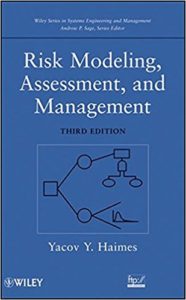Risk Modeling Assessment and Management 3rd Edition
Risk Modeling Assessment and Management 3rd Edition
Risk Modeling Assessment and Management 3rd Edition describes the state of the art of risk analysis, a rapidly growing field with important applications in engineering, science, manufacturing, business, homeland security, management, and public policy. Unlike any other text on the subject, this definitive work applies the art and science of risk analysis to current and emergent engineering and socioeconomic problems. It clearly demonstrates how to quantify risk and construct probabilities for real-world decision-making problems, including a host of institutional, organizational, and political issues.
You can also read Risk Assessment Tools, Techniques, and Their Applications
Risk Modeling, Assessment, and Management, 3rd Edition Content
- Preface
![Risk Modeling Assessment and Management 3rd Edition Risk Modeling Assessment and Management 3rd Edition]()
- Acknowledgments
- The Art and Science of Systems and Risk Analysis
- The Role of Modeling in the Risk Analysis Process
- Identifying Risk Through Hierarchical Holographic Modeling
- Decision Analysis
- Multiobjective Trade-off Analysis
- Defining Uncertainty and Sensitivity Analysis
- Risk Filtering, Ranking, and Management
- Risk of Extreme Events and the Fallacy of Expected Value
- Multiobjective Decision-Tree Analysis
- Multiobjective Risk Impact Analysis Method
- Statistics of Extremes: Extension of the PMRM
- Bayesian Analysis and the Prediction of Chemical Carcinogenicity
- Fault Trees
- Multiobjective Statistical Method
- Principles and Guidelines for Project Risk Management
- Applying Risk Analysis to Space Missions
- Risk Modeling, Assessment, and Management of Terrorism
- Inoperability Input-Output Model and Its Derivatives for Interdependent Infrastructure Sectors
- Case Studies
Risk-based decision making and risk-based approaches in decision making are terms frequently used to indicate that some systemic process that deals with uncertainties is being used to formulate policy options and assess their various distributional impacts and ramifications. Today an ever-increasing number of professionals and managers in industry, government, and academia are devoting a large portion of their time and resources to the task of improving their understanding and approach to risk-based decision making. In this pursuit they invariably rediscover (often with considerable frustration) the truism: The more you know about a complex subject, the more you realize how much still remains unknown. There are three fundamental reasons for the complexity of this subject.


Comments are closed.